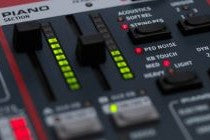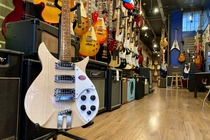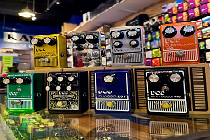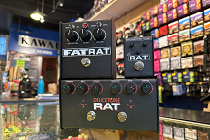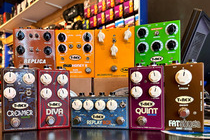Sometimes, the amount of gain your amp's pre-amp stage produces just isn't enough for the music you're playing, or it might not have the tonal characteristics you're after for a particular song. This is the time when you might want to consider an overdrive or distortion pedal to add to your rig.
So, what's the difference? Well, an overdrive pedal increases the signal strength going to the power amp stage of the amp to the point where you will get a nice 'break-up', by which we mean a subtle distortion of the blues/classic rock style. Setting the gain knob low on an overdrive will add warmth to the tone without necessarily creating a 'breaking-up' sound. A distortion pedal takes things to the next level, boosting the signal further to get a more distorted, heavy rock or metal tone. These can have different characteristics, from a straight-forward good-ol' British Marshall crunch to the mid-scooped modern US metal tones, so it's definitely worth trying as many as you can to find the sound you're after.
Generally speaking, overdrives and distortion pedals come before the pre-amp, that is to say, not in an effects loop. However, we certainly don't want to discourage such experimentation; that's half the fun, and many people like the sound of 'power amp distortion'.
Overdrive pedals are also often used as a boost for an already distorted sound, especially for solo sections, so don't discount the value of one in your rig even if you love the sound of your amp cranked to 11!

